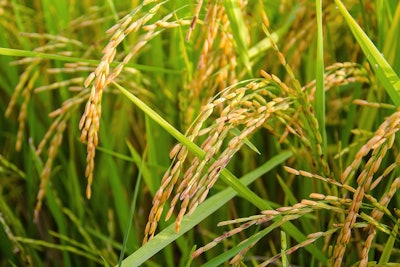
According to the United States Department of Agriculture (USDA)'s August Rice Outlook, the global rice trade landscape is experiencing a significant shift as India, a major player in the international rice market, enforces an immediate ban on the export of non-basmati and nonparboiled milled rice. The repercussions of this decision have led to substantial revisions in the global rice trade forecasts for both 2023 and 2024. The export restrictions imposed by India have prompted urgent buying activities among certain importers and a rapid escalation in Asian rice prices.
In the wake of India's export ban announced on July 20, the projected global rice export figures for 2024 have been revised downward by 3.4 million tons to 52.9 million tons. India's export estimates for 2024 have been notably reduced by 4.0 million tons to 19.0 million tons (see Figure 1). This reduction in India's exports has been somewhat offset by increased export forecasts for other countries, including Brazil, Pakistan, Russia, and Vietnam.
For the ongoing year, 2023, the global rice exports are now expected to decrease by 1.9 million tons, reaching 53.8 million tons. India's anticipated exports for 2023 have been scaled back by 2.0 million tons to 20.5 million tons. The trade outlook for both 2023 and 2024 has led to adjustments in import forecasts for several major importers in Asia and Sub-Saharan Africa.
The repercussions of India's export ban are most evident in the Asian rice trading market, where prices have surged significantly over the past month. Notably, price quotes from Thailand have surged by 25 percent, and those from Vietnam have risen by 20 percent. In the United States, long-grain milled rice prices have remained close to record highs, while medium- and short-grain nominal price quotes have reached unprecedented levels.
On the production front, global rice production for the 2023/24 period is projected to hit a record high of 520.9 million tons (milled basis), reflecting an increase of 173,000 tons from the previous month's forecast. Upward revisions in crop estimates for Russia, Uganda, and the United States have partially countered decreases in production forecasts for Bolivia, the European Union, Suriname, and Turkey.
In light of reduced imports by several countries primarily in Asia and Sub-Saharan Africa, the global domestic and residual use forecast for 2023/24 has been lowered by nearly 1.0 million tons to 523.0 million tons. This adjustment is directly influenced by India's export ban and the ensuing rise in prices.
In terms of stockpiles, the projection for global ending stocks in 2023/24 stands at 171.8 million tons, indicating a revision of 1.4 million tons upward from the previous forecast. However, this figure remains 2.0 million tons lower than the previous year's estimate. India's upward stock revision has played a pivotal role in offsetting reductions in other countries, primarily in Asia.
Turning attention to the United States, the rice market is witnessing its own set of adjustments. The production forecast for the 2023/24 period has been increased by 1 percent to 203.6 million hundredweight (cwt) due to a higher yield of 7,699 pounds per acre. This marks the initial survey-based yield forecast for the crop of 2023/24. Carryin for 2023/24 has been decreased by 1.0 million cwt based on robust exports during 2022/23.
No revisions have been made to the 2023/24 U.S. use estimates, with domestic and residual use anticipated to reach record highs and exports projected to surge by 25 percent compared to the previous year. The forecast for ending stocks in 2023/24 has been raised by 1.6 million cwt, amounting to 31.2 million cwt.
With these developments in mind, the season-average farm price (SAFP) forecast for long-grain rice in 2023/24 has been elevated by $1.00 to $15.50 per cwt. This adjustment contributes to an increase of 70 cents in the all-rice SAFP, bringing it to $17.70. Despite these shifts, SAFPs for both classes of rice in 2023/24 are projected to remain lower than those of the previous year.
In conclusion, the global rice trade landscape is undergoing a significant reshaping due to India's export ban on non-basmati and nonparboiled milled rice. This move has led to downward revisions in trade forecasts for both 2023 and 2024, influencing prices, import/export trends, and stock levels across various countries, particularly in Asia and Sub-Saharan Africa.


















